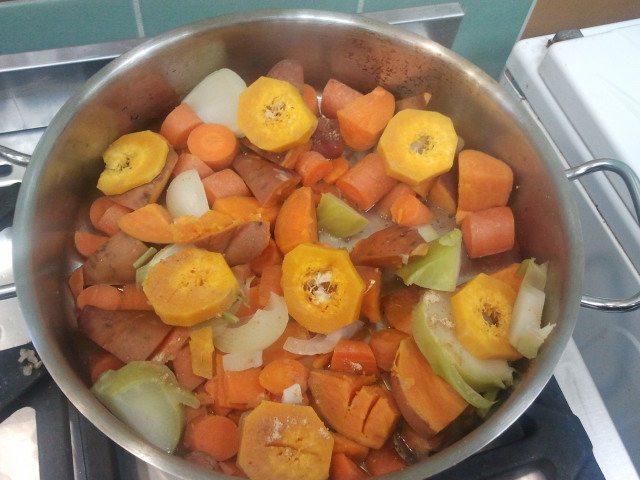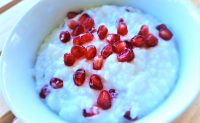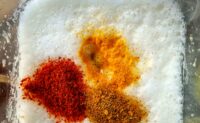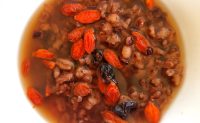Nishime
Eyal Shpringer

Despite its exotic-sounding name, Nishime is a simple cooking technique used in most kitchens worldwide. Japanese Nishime has become one of the central cooking methods in the macrobiotic kitchen thanks to its simplicity, soft texture, and delicately sweet taste of the vegetables cooked this way.
Ingredients (use all or some):
Root vegetables such as carrots, parsnips, celery root, and hardy vegetables such as kale, cabbage, and broccoli in an amount that covers the bottom of a skillet or shallow pot.
The vegetables are cut into large chunks.
A piece of kombu seaweed soaked in water and cut into strips.
A little salt or some shoyu soy sauce.
Method of cooking:
Place the kombu on the bottom of a wide, heavy skillet or a low-rimmed pot, along with the soaking water.
Place the vegetables on top, sprinkle with a bit of salt or shoyu soy sauce, cover with a lid, and bring to a boil on high heat.
After boiling, lower the heat to low and simmer for about 20 minutes until the vegetables are tender. For dishes for the treatment of extreme weakness, simmer for at least 40 minutes. Do not stir the dish.
Eat Nishime about 3 times a week.
Additional options (as recommended by a practitioner):
- Add some protein such as fish, chicken, tofu, tempeh, or seitan at the start of cooking.
- Add a warming spice such as cinnamon, ginger, galangal, or coriander.
- Mix 1-2 teaspoons kudzu starch into the kombu soaking water and add the water at the end of cooking.
- Incorporate medicinal herbs such as astragalus for addressing fatigue or ginger for circulation, according to the patient’s needs.
- Add boiling water mixed with 1 tsp miso paste in the last minutes of cooking.
Nishime, according to the perspective of traditional medicine:
The Nishime dish reflects the earth element: it uses vegetables with a sweet taste and medium cooking time, and the resulting recipe provides a sense of stability due to its soft texture and mild flavors.
In the clinic, Nishime is a central cooking method when we would like to impart a sense of strength and stability to the patient. Therefore, Nishime can be used to address conditions such as extreme weakness, anemia, digestion issues, hair loss, and emotional imbalance.
Eyal Shpringer, A Chinese medicine practitioner and a clinical herbalist specializing in Chinese nutrition and traditional nutritional approaches. Eyal holds a master’s degree in research of East Asian medicines. Since 2007 he has been teaching a postgraduate training program in Chinese and oriental nutrition according to the TEF method and other courses and workshops for practitioners. Eyal co-authored the bestselling book Cooking for Life: A Traditional Nutrition Cookbook for Cancer Patients (Hebrew).
Did you find the recipe interesting? Do you want to continue studying with me?
You are invited to join me on my Instagram page and the Traditional Nutrition and Medicine Facebook group.


